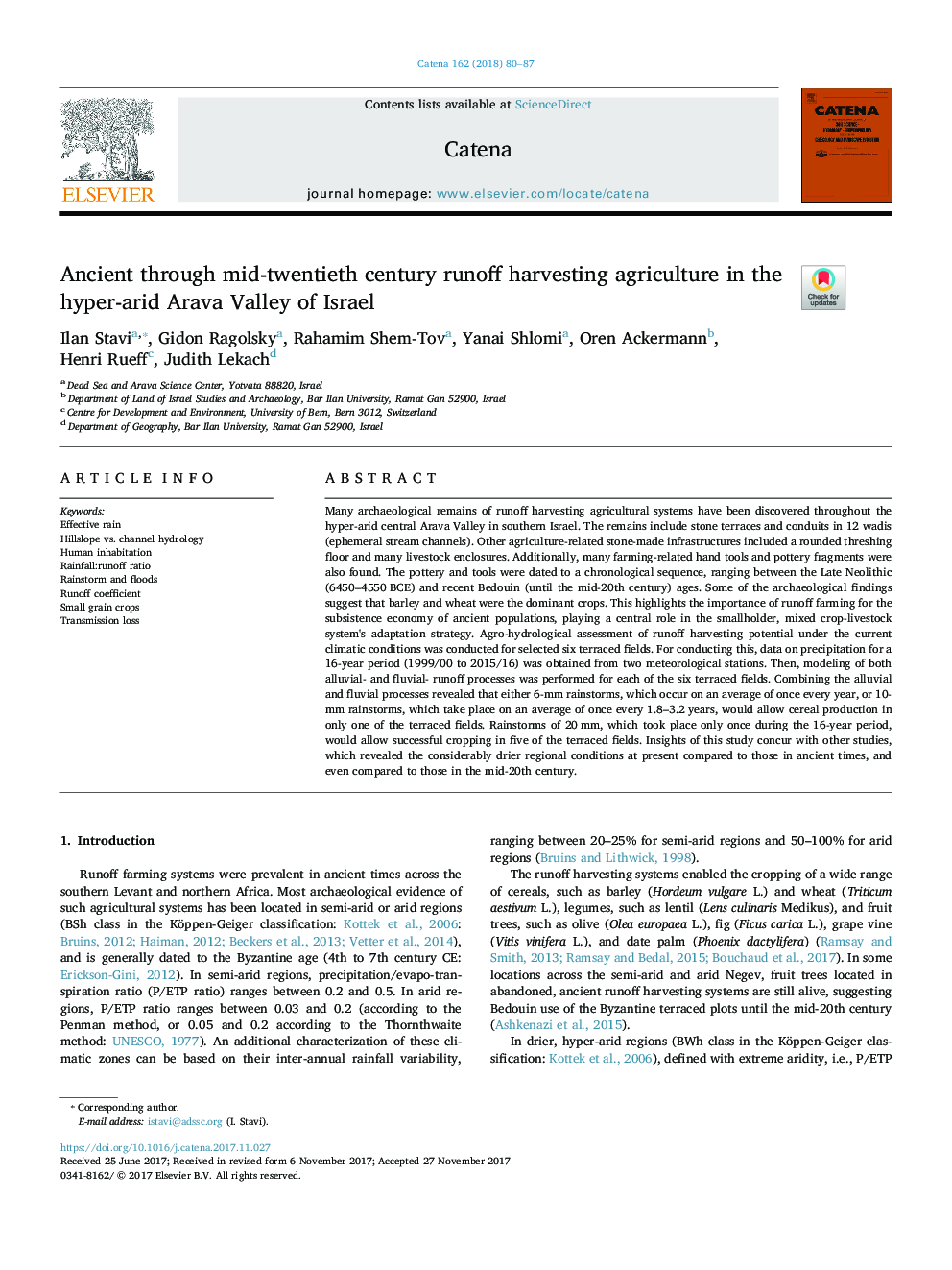| کد مقاله | کد نشریه | سال انتشار | مقاله انگلیسی | نسخه تمام متن |
|---|---|---|---|---|
| 8893732 | 1629192 | 2018 | 8 صفحه PDF | دانلود رایگان |
عنوان انگلیسی مقاله ISI
Ancient through mid-twentieth century runoff harvesting agriculture in the hyper-arid Arava Valley of Israel
ترجمه فارسی عنوان
باستان را از طریق رواناب دهۀ اواسط قرن بیستم برداشتن کشاورزی در دره فراموشی آرواو
دانلود مقاله + سفارش ترجمه
دانلود مقاله ISI انگلیسی
رایگان برای ایرانیان
کلمات کلیدی
باران موثر، هیللوپ در مقابل هیدرولوژی کانال، بشر بشر، بارش: نسبت رواناب، باران و سیلاب، ضریب رواناب، محصولات دانه کوچک، از دست دادن انتقال،
موضوعات مرتبط
مهندسی و علوم پایه
علوم زمین و سیارات
فرآیندهای سطح زمین
چکیده انگلیسی
Many archaeological remains of runoff harvesting agricultural systems have been discovered throughout the hyper-arid central Arava Valley in southern Israel. The remains include stone terraces and conduits in 12 wadis (ephemeral stream channels). Other agriculture-related stone-made infrastructures included a rounded threshing floor and many livestock enclosures. Additionally, many farming-related hand tools and pottery fragments were also found. The pottery and tools were dated to a chronological sequence, ranging between the Late Neolithic (6450-4550Â BCE) and recent Bedouin (until the mid-20th century) ages. Some of the archaeological findings suggest that barley and wheat were the dominant crops. This highlights the importance of runoff farming for the subsistence economy of ancient populations, playing a central role in the smallholder, mixed crop-livestock system's adaptation strategy. Agro-hydrological assessment of runoff harvesting potential under the current climatic conditions was conducted for selected six terraced fields. For conducting this, data on precipitation for a 16-year period (1999/00 to 2015/16) was obtained from two meteorological stations. Then, modeling of both alluvial- and fluvial- runoff processes was performed for each of the six terraced fields. Combining the alluvial and fluvial processes revealed that either 6-mm rainstorms, which occur on an average of once every year, or 10-mm rainstorms, which take place on an average of once every 1.8-3.2Â years, would allow cereal production in only one of the terraced fields. Rainstorms of 20Â mm, which took place only once during the 16-year period, would allow successful cropping in five of the terraced fields. Insights of this study concur with other studies, which revealed the considerably drier regional conditions at present compared to those in ancient times, and even compared to those in the mid-20th century.
ناشر
Database: Elsevier - ScienceDirect (ساینس دایرکت)
Journal: CATENA - Volume 162, March 2018, Pages 80-87
Journal: CATENA - Volume 162, March 2018, Pages 80-87
نویسندگان
Ilan Stavi, Gidon Ragolsky, Rahamim Shem-Tov, Yanai Shlomi, Oren Ackermann, Henri Rueff, Judith Lekach,
